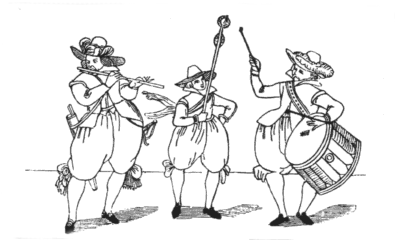

The following fightbooks and one fightbook dissertation lie at the foundation of this study project. Several individuals in both the academic and historical fencing communities are owed a huge thank-you for making these works available, both in scanned manuscript (graphical) and transcript (HTML text) formats. Those people are named in the credits section.
Hanko Döbringer, Kunst des Langen Schwerts, 1389, Origin Germany, (Transcript by Grzegorz Zabinski), Biblioteka Jagiellonski, Poland
Peter von Danzig, Collection of Teachings by Various Masters, Origin: Germany, 1452, (Transcript by Grzegorz Zabinski), Biblioteca dell'Academica Nazionale dei Lincei e Corsiniana, Italy
Sigmund Ringeck, Die Ritterlich Kunst des Langen Schwerts, c.1455-1460, (Transcript by Martin Wierschin, 1965), Sächsische Landesbibliothek, Germany
Hans Talhoffer, Alte Armatur und Ringkunst, 1459, Origin: Germany, Det Kongelige Bibliotek, Denmark
Hans Talhoffer, Fechtbuch aus dem Jahre 1467, 1467, (Modern German translation by Gustav Hergsell, 1887; published by VS Books, 1998), Germany
Various Authors, Hans von Speyer's fechtbuch, 1491, (Transcript by Beatrix Koll), Universitäts Bibliotek Salzburg, Austria
Uncredited, Goliath, c.1500, Origin: Germany, (Revised and illustrated edition of 1452 text, reconstructed and transcribed by Grzegorz Zabinski, 1989), Biblioteka Jagiellonski, Poland
Christian Egenolph, Der Altenn Fechter Anfengliche Kunst, 1529, (Transcript by Alexander Kiermayer of Ochs), Germany
Joachim Meyer, Gründtliche Beschreibung der Kunst des Fechtens, 1570, (Transcript by Alexander Kiermayer of Ochs), Germany
Jakob Sutor, Neu Kunstliches Fechtbuch, 1612, origin: Germany, (Transcript by Marlon Hoess-Boettger of Die Freifechter.), Leuven Universiteitsbibliotheek, Belgium
Hans-Peter Hils, Meister Johann Liechtenauers Kunst des langen Schwertes, 1985, University of Freiberg and Peter Lang GmbH, Frankfurt am Main, Germany
The images used in these pages are from Fechtbuch aus dem Jahre 1467, Alte Armatur und Ringkunst, Goliath, Meyer's Fechtbuch, and Neu Kunstliches Fechtbuch. The text background for the glossary, projects, and Talhoffer pages is from Alte Armatur und Ringkunst. The text background for the dictionary and Goliath pages is from Goliath.
The transcripts used in this project are excellent and well appreciated. Transcripts to text have made study of the fechtbücher immensely easier. Deciphering sometimes impenetrable script in archaic dialects is no longer necessary, one can concentrate on reading the archaic dialects in plain text, sounding them out and, if necessary or desired, translating them.
I would like to thank Martin Wierschin, Grzegorz Zabinski, Alexander Kiermayer, Marlon Hoess-Boettger, Beatrix Koll, and Stefan Dieke for their transcription efforts. Folks, thank-you for making my work easier.
Most cited texts can be accessed, viewed, or ordered via the Knowledge Base page of The Academy of European Medieval Martial Arts web site. Thanks to David Cvet for posting these online and for his help with interpretation and testing.
Thanks also to AEMMA's Brian McIlmoyle for his help in the interpretation and testing effort, particularly with Meyer's fechtbuch.
Many manuscripts and related information can also be found at the Texts and Manuals Page of the Association for Renaissance Martial Arts web site. Thanks to John Clements for this effort.
Special thanks to Die Freifechter (The Free Fencers) for putting modern text (while still remaining archaic German) transcripts of several fechtbücher online. I thank the Freifechter's Stefan Dieke in particular for his kind permission to post translations of the transcripts on this site. Stefan has also helped to clarify several points in the Liechtenauer tradition and has given some well appreciated feedback in several areas of translation and interpretation.
I would also like to thank The Company of Cavalier Gentlemen for introducing me to the rudiments of rapier. Thanks to the Cavaliers' Scott Nichols for helping with many of the physical interpretation efforts and some helpful feedback.
Thanks to Christian Tobler (Order of Selohaar) for his advice regarding the Schrankhut. This is now translated as "barrier guard" in all the appropriate places.
A big danke to Jörg Bellinghausen for his corrective feedback on letzer, ebichter, einwendig, and auswendig. The Meyer Prellhau description was completely re-written to reflect Jörg's corrections. Tack så mycket to Bengt Abrahamsson for initially pointing out the issue and prompting Jörg to clarify. Bengt also contributed a correction to Meyer's verkehrter hauen description.
Thanks also to Keith Myers of the Continental Academy regarding the ricasso nature of schilt, for confirming the crossed (in addition to "barred") nature of schranck/geschrenckten/verschrankte, and for a series of comparisons which may show parallels between Joachim Meyer's style and that of the earlier work of Paulus Hector Mair. Keith has also submitted several contributions to the dictionary.
Many excellent discussions have taken place on Sword Forum which helped clarify several subjects, particularly the scheitelhau and verkehrter hauen.
Textual content, German-to-English translations, and layout are CopyLeft Michael W. Rasmusson, Toronto, 2001, 2002
Fechtbuch images and content are made available for study purposes only. Permission to use the graphics for non-academic purposes must be obtained from the copyright holders.
Sound bites of historically relevant commentary can be found here:
This document is published as Open Source under the GNU General Public License (GPL). Any changes or extensions intended for redistribution and/or sale must be made open to public review and further modification. I ask only that this source be credited where credit is due. Any submitted changes to this, the root document, will be fully credited if accepted and included.
The GPL can be examined in full at the GNU web site.



